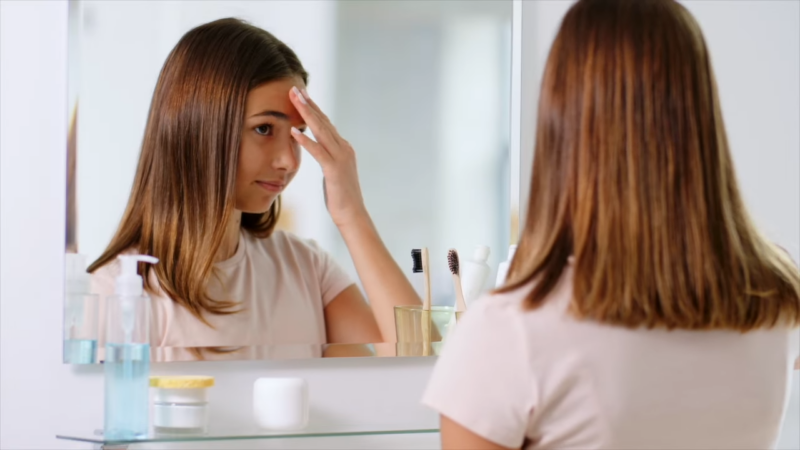Acne pustules are a common and often frustrating skin issue that can affect individuals of all ages.
These blemishes are inflamed pimples that contain pus, sebum, and dead skin cells.
While they can occur anywhere on the body, they are most frequently found on the face, shoulders, back, and chest.
For some, acne pustules are an occasional nuisance; for others, they are a persistent issue that impacts their quality of life.
How Do They Differ from Other Blemishes?

An acne pustule is a type of inflammatory acne lesion that develops when a pore becomes clogged and the immune system reacts, resulting in the buildup of pus.
They appear as red or swollen pimples with a white head, and they can vary in size.
Unlike non-inflamed blackheads, pustules are tender and inflamed due to the presence of bacteria and the immune response.
Causes of Acne Pustules
Common Causes of Acne Pustules
Explanation
Hormonal Changes
Puberty, pregnancy, and menopause can trigger breakouts.
Genetics
Family history increases the likelihood of acne.
Skincare Products
Oil-based products can clog pores, leading to acne.
Diet
High-glycemic foods and dairy have been linked to acne.
Acne pustules form when there is a combination of excess sebum, dead skin cells, and bacteria in a clogged pore.
Propionibacterium acnes (P. acnes) bacteria, which normally reside on the skin, thrive in these clogged pores, leading to infection and inflammation.
Hormonal changes, genetic predisposition, and environmental factors such as diet and skincare habits also play significant roles in acne formation.
Symptoms of Acne Pustules
Acne pustules are easily recognizable due to their appearance.
They are red or pink lesions with a white or yellow pus-filled center.
These pustules can vary in size and are often tender or painful to the touch, making them distinct from non-inflamed acne forms like blackheads and whiteheads.
Distinguishing Pustules from Other Blemishes
- Blackheads – Open comedones filled with sebum and dead skin; they appear black due to oxidation.
- Whiteheads – Closed comedones filled with sebum and skin cells but not inflamed.
- Pustules – Inflamed, red pimples with a pus-filled center.
- Papules – Inflamed lesions without pus that may progress to pustules.
How to Treat Acne Pustules

Over-the-counter (OTC) Treatments
Most acne pustules can be effectively treated with over-the-counter products.
The key ingredients in these products target acne-causing bacteria, reduce inflammation, and clear pores:
- Salicylic Acid – Exfoliates dead skin cells and prevents clogged pores.
- Benzoyl Peroxide – Kills acne-causing bacteria and reduces inflammation.
- Retinoids – Derived from vitamin A, retinoids encourage cell turnover to prevent pore blockages.
- Topical Antibiotics – Clindamycin and erythromycin can reduce inflammation and bacterial presence.
Prescription Treatments
For more severe cases of acne pustules, dermatologists may recommend prescription-strength treatments:
- Oral Antibiotics – Medications such as tetracycline, doxycycline, and minocycline are used to reduce inflammation and bacterial growth.
- Oral Retinoids – Isotretinoin, formerly known as Accutane, is effective for severe acne but has potential side effects and is not suitable for pregnant individuals due to the risk of birth defects.
- Hormonal Treatments – Birth control pills and anti-androgen medications can be helpful for women with hormonally-driven acne.
Acne Treatment
Use Case
Potential Side Effects
Salicylic Acid
Mild acne exfoliates dead cells
Skin dryness and irritation
Benzoyl Peroxide
Inflammatory acne, bacterial reduction
Skin redness, bleaching of fabrics
Oral Antibiotics
Moderate to severe acne
Antibiotic resistance, digestive issues
Isotretinoin
Severe, cystic acne
Dry skin, birth defects, liver complications
Alternative and Complementary Therapies
While not as well-researched, some natural and complementary treatments may offer relief for mild acne pustules:
- Tea Tree Oil exhibits antibacterial properties that may reduce acne-causing bacteria.
- Zinc Supplements can reduce inflammation and are thought to improve skin health.
- Aloe Vera is known for its anti-inflammatory and soothing properties.
Photodynamic Therapy for Acne
View this post on Instagram
For individuals with severe, treatment-resistant acne, photodynamic therapy (PDT) may be an option.
This procedure combines a light-activated solution with a light source to reduce oil production in the skin, thereby minimizing the chances of clogged pores.
Although effective, this treatment may require multiple sessions and is generally more costly than topical and oral therapies.
Prevention
Preventing acne pustules often involves a combination of skincare, lifestyle, and dietary adjustments.
Here are some practical prevention tips:
- Regularly Cleanse the Skin – Use gentle, non-comedogenic cleansers to remove dirt, oil, and makeup.
- Avoid Touching the Face – Reduces the risk of transferring bacteria and oil to the skin.
- Shower After Physical Activity – Sweating can lead to clogged pores, so it’s beneficial to cleanse the skin after exercise.
- Choose Non-Comedogenic Products – Opt for skincare and makeup products labeled as “non-comedogenic” to avoid clogging pores.
Preventative Measures
Effect on Skin
Non-Comedogenic Products
Reduces the likelihood of clogged pores
Daily Cleansing
Prevents buildup of oil and bacteria
Avoiding Face Touching
Minimizes bacteria transfer
Post-Exercise Showering
Prevents sweat-induced pore clogging
Diet and Acne
Can a Dairy-Free Diet Cure Acne? For Many People, Yes https://t.co/hCcVPIwchO
— Go Dairy Free (@GoDairyFree) June 3, 2024
Emerging evidence suggests that diet can have an impact on acne.
High-glycemic foods, such as refined sugars and white bread, may worsen acne by increasing insulin levels and inflammation.
Dairy, particularly milk, has also been associated with acne in some studies, potentially due to the presence of hormones.
While more research is needed, following a balanced diet with whole grains, fruits, vegetables, and lean proteins may help reduce the risk of acne flare-ups.
Summary
Acne pustules are a common type of acne that can range from mild to severe.
They result from a combination of factors, including clogged pores, bacterial growth, and hormonal changes.
Treatment options vary based on severity and include both OTC and prescription medications.
For persistent cases, photodynamic therapy may offer a solution.
Prevention strategies, including proper skincare, avoiding pore-clogging products, and possibly adjusting one’s diet, can help reduce the occurrence of pustules.

